When they need air, New Yorkers cross the high canyons of Manhattan, take Highway 9 north of Harlem and follow the course of the Hudson – an oil-drunk river, Lorca said – to the rolling peaks of the Catskills, which change color with the seasons and which once marked the natural border of the United States. In these mountains you can fly fish or kayak along rivers and lakes, take long walks along wooded trails, slide down the slopes of a ski resort, play golf on one of six public courses, or even stay for a weekend on a farm, where rural life will calm urban stress. You can also, avoiding the risk, overlook the fabulous Kaaterskill Falls, which are higher than Niagara – they have a drop of just over 70 meters on two levels – and whose beauty has inspired painters and writers, such as Thomas Cole and John Burroughs, for more than a century.
Along the eastern bank of the Hudson, before crossing the long iron structure of the Governor Mario M. Cuomo Bridge, the road passes the house where the writer Washington Irving lived in Tarrytown: a 17th-century Dutch farmhouse with a gable roof and a porch full of wisteria, which he rebuilt and expanded upon his return from Europe and called sunny sidethe sunny slope. Here are the writer’s personal effects saved in 1945 by John D. Rockefeller Jr. when he purchased the house to open it to the public as a museum, with his office, the library and the oak desk that his publisher gave him. In nearby Sleepy Hollow Irving set his famous legend, in which a headless horseman terrorized the population. Every year for Halloween, tours Dramatically they travel the streets to the church and the Gothic cemetery, where the writer’s remains rest alongside personalities such as the businesswoman Elizabeth Arden or the automobile magnate Walter Chrysler.
Across the river, the asphalt slides through forests and hills, traversed by groups of motorcyclists and gleaming convertibles, crossing the Seven Lakes Valley towards Bear Mountain, from whose observation tower you can see Manhattan on a clear day. This state park has a recreation area with a swimming hole and rowboats, and there is a classic car show on Wednesdays and Saturdays.
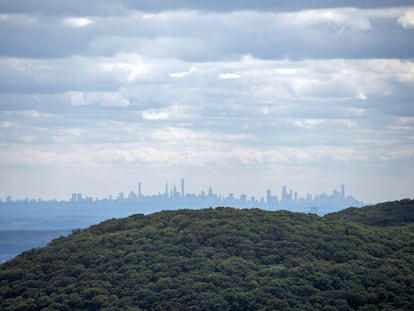
Towards New Windsor, from the window you can see some sculptures from the Storm King Art Center, dotting the hills of Mountainville. This open-air museum features works by artists such as Henry Moore, Alexander Calder, Richard Serra and Roy Lichtenstein and can be explored on foot, by tram or by bicycle.
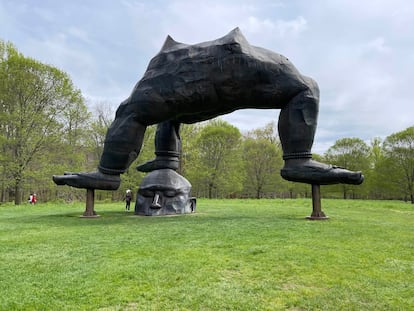
Even though it’s still a little far away, a certain Woodstock vibe seems to be reaching New Paltz: antiques, rainbow flags, crafts, hostels for students or the characteristic peace symbol present on some facades and gardens. This Ulster County town was founded in 1678 by Huguenots fleeing France and boasts the oldest inhabited neighborhood in the United States on Huguenot Street, where some original Dutch-style buildings languish and the 1717 church, rebuilt stone by stone with an adjoining cemetery. Next to this road flows the Wallkill River, whose wetlands are home to the Nyquist-Harcourt Wildlife Sanctuary, where more than 140 species of birds live protected. On the outskirts, reflected in the river, the campus of the State University of New York extends in its most important location, surrounded by a path that crosses woods and meadows. On Sundays, an open-air market is held where local farmers sell their products: craft beers, apples, ciders and liqueurs, pumpkins, peaches or pastries, accompanied by musical performances by local artists. A few miles away, the historic Perrine’s Bridge, the second oldest covered bridge in the state, tiptoes across the river with its fragile wooden structure.
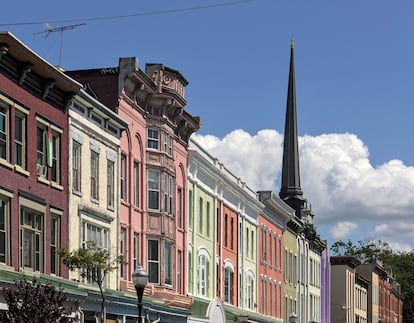
On its long journey south, the Hudson meets Kingston with its tributary Rondout Creek. This coastal city of bluestone sidewalks, emerging from Dutch colonization, was New York State’s first capital in 1777, and its port and center of commercial activity in the 19th century. The Stockade historic district preserves several 17th-century buildings such as the Senate, whose museum recreates the life of those settlers with furniture and portraits of the time. The city’s prosperous past permeates Uptown with colorful murals and galleries, florists and small antique shops, cafes and bistros where you can have lunch with the typical cod and chips, tasting craft beer or Crianza from a nearby vineyard, as well as shops vintage and a few unified bookcases whose backs contain old-fashioned handbags or old original book covers New Yorker beautifully framed. On the riverside promenade there are small temples of the local library and panels that tell the story of famous ships such as the Mary Powell, the Queen of the Hudson. From May to October you can take a river cruise on a solar-powered boat from Rondout Landing, visiting the lighthouse. In the courtyard of the Maritime Museum, which organizes conferences and workshops on navigation and shipbuilding, the giant has been sleeping since the last century. Matildaone of the last steam tugboats, dreaming of plying these waters again.
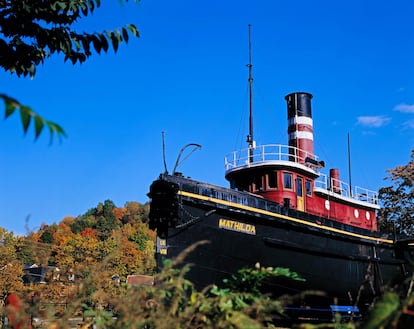
Towards Woodstock the highway borders the Ashokan Reservoir, one of the largest in the country, which supplies New York City, overhung by bald eagles and surrounded by the path of an old rail line.
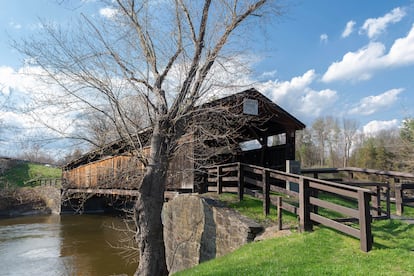
It is known that those three days of peace and holiday music that will mark several generations were not celebrated in this town in 1969, but in the meadows of a farm in Bethel, more than an hour from here. But Woodstock lives on its legend and shows its bohemianism along Tinker Street, the main artery that crosses it, where the roots of the trees push the old pavement wet from yesterday’s rains and the poles display posters with the upcoming concerts of the Bearsville Theatre. Perhaps it is the succession of bookshops, galleries and pretty shops decorated with flowers, light bulbs and flags, whose white-painted windows offer handicrafts, clothing vintage or bright, colorful t-shirts, and all kinds of items that celebrate music and brotherhood. In the square, in front of the church, stands a monolith with the phrase “May peace prevail on earth” engraved in all the languages of the world. Already at the beginning of the last century, an important community of artists had established itself in Woodstock, in the Byrdcliffe neighborhood, whose center exhibits and sells the creations of its students and residents, including Bob Dylan, in this street.

Continuing the walk, in a sober building painted red, you discover the headquarters of the Woodstock Film Festival, which is held every autumn and also includes a residency program for emerging directors. After lunching on produce from local farms, you’ll want to head out onto a trail into the huge Catskill Forest Preserve, where with any luck you’ll spot bobcats, bears or mountain lions. Furthermore, under the effect of the peaceful spirit of Woodstock, go and meditate in the Tibetan Karma Triyana Dharmachakra monastery, hidden with its great golden Buddha in the thickness of these mountains.



